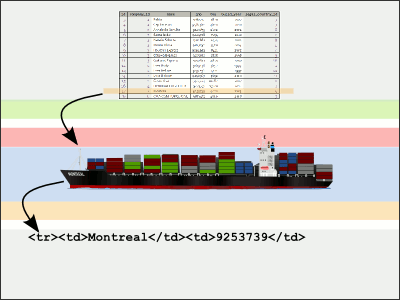Here are the English slides about how to optimize database queries in Ruby On Rails. I have showed this presentation at the Ruby User Group Hamburg at the 9th August 2012.
Tag Archives: Sql
(Deutsch) Ruby On Rails Datenbankoptimierung Teil 2
[Zu Teil 1] Verknüpfungen mit dem SQL-join Relationale Datenbanken erlauben es, Tabellen miteinander zu verknüpfen. In SQL gibt es für diese Verknüpfung das Schlüsselwort “JOIN“. Eine solche Verknüpfung kann theoretisch sehr frei spezifiziert werden, in der Praxis wird man fast immer aufgrund der Gleichheit bestimmter ID-Spalten verknüpfen. In unserem Beispiel eines Schiffsinformationssystems haben wir eine …
Continue reading “(Deutsch) Ruby On Rails Datenbankoptimierung Teil 2”
Optimize the Ruby-on-Rails database – part one
Reduce the number of database queries A typical web application does many database queries before it delivers the response page to the web browser. The application needs to wait for the response of each of these database queries. It gets an additional slow down because of process switching. The database server must analyze each request, …
Continue reading “Optimize the Ruby-on-Rails database – part one”
Rails ActiveRecord: count, length or size?
The object oriented database layer “ActiveRecord” offeres three different methods to determine the number of objects: count(), length() und size(). Alle drei Methoden liefern das gleiche Ergebnis. Was nehmen wir wann? Warum ist es überhaupt wichtig? Nimmt man die falsche Methode, dann erzeugt unsere Ruby-on-Rails-Anwendung überflüssige Datenbankabfragen oder braucht mehr Speicher als eigentlich nötig. Die …
Continue reading “Rails ActiveRecord: count, length or size?”
SQL: Set a Field from a linked Table
A little hack for the Joomla Community Builder Recently, I received a job request. An existing web application will be greatly expanded, and therfore converted to use the CMS “Joomla”. For the management of members the extension “Community Builder” will be used. Previously, users had a number as login name. This number should now be …

